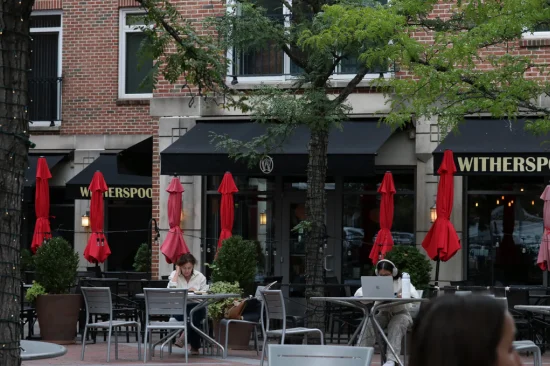In search of third spaces
September, 2025Some of the most important subjects in life are those that cannot be learned in solitude or taught in school. Whether those are skills learned through experience or lessons realized through failure, as students, we ought to have a place to explore these ideas. Instead of relying on a home or school setting to facilitate this growth, we should seek a “third space” — a public area where individuals can interact and build a sense of community. The way to cultivate such a space is to ensure that everyone is welcome there and that there are no serious responsibilities. Busy PHS students often neglect to venture into environments besides home and school, but seeking out third spaces is highly beneficial for their own well-being and overall social health.
PHS’s academic culture is very competitive, and third spaces may feel like a waste of time unless it’s for meeting up to do work. However, these places act as buffers against burnout and isolation. Many libraries now incorporate creative “stress-buster” zones — think therapy dogs, board games, and “Secrets Walls” where anxious students can share confessions anonymously and connect through shared vulnerability.
Indeed, studies have shown that attendance at third spaces provide academic benefits too. For example, a study in 2011 by Anton Havnes, a professor specialized in education, found that the likelihood of college enrollment increased by 7% when students took advantage of these spaces. He reasoned that this increase was due to more people being taught about the importance of college having spoken to people they otherwise would not have. A survey from the NIH conducted shortly after the rise of Covid found that people reported levels of reduced well-being because they could not access their third spaces, proving that these spaces are essential for success.
But even without these benefits, students should value and protect third spaces. School often forces students to be constantly productive without room for breaks, and this stress carries over into late-night studying sessions at home. Third spaces allow for us to slow down and have fun; it is just an added benefit that enjoying ourselves is academically beneficial.
Given all of these upsides, where are these places? Established third spaces have a few characteristics: it should be welcoming to all and easily accessible, it shouldn’t require work or commitment to participate in, and finally, it should be focused on human connection. They outline the key social functions these spaces serve — not just physically, but emotionally and culturally. His framework helps us understand why these spaces matter so deeply in building community, well-being, and belonging. Though the internet wasn’t prevalent when third spaces were first devised, these places can be online too. Consider using these places to take a break and take comfort in knowing that work is still being done; learning is most efficient when it is wanted.
One of Princeton’s most attractive third spaces for students is the Princeton Public Library. Whether you’re meeting with friends to study or just to have fun, it serves as a place for socialization and connection. The Teen Center frequently offers Take & Make crafts to help destress, and the third floor has a collection of different games to play with friends. In addition to serving as just a free-form space, the library often hosts events open to the public. Princeton also offers many cafés and boba shops with space that students can take advantage of, such as Small World Coffee and Junbi. No matter how busy life seems to get, we should always carve out time to find a third space and experience connection
